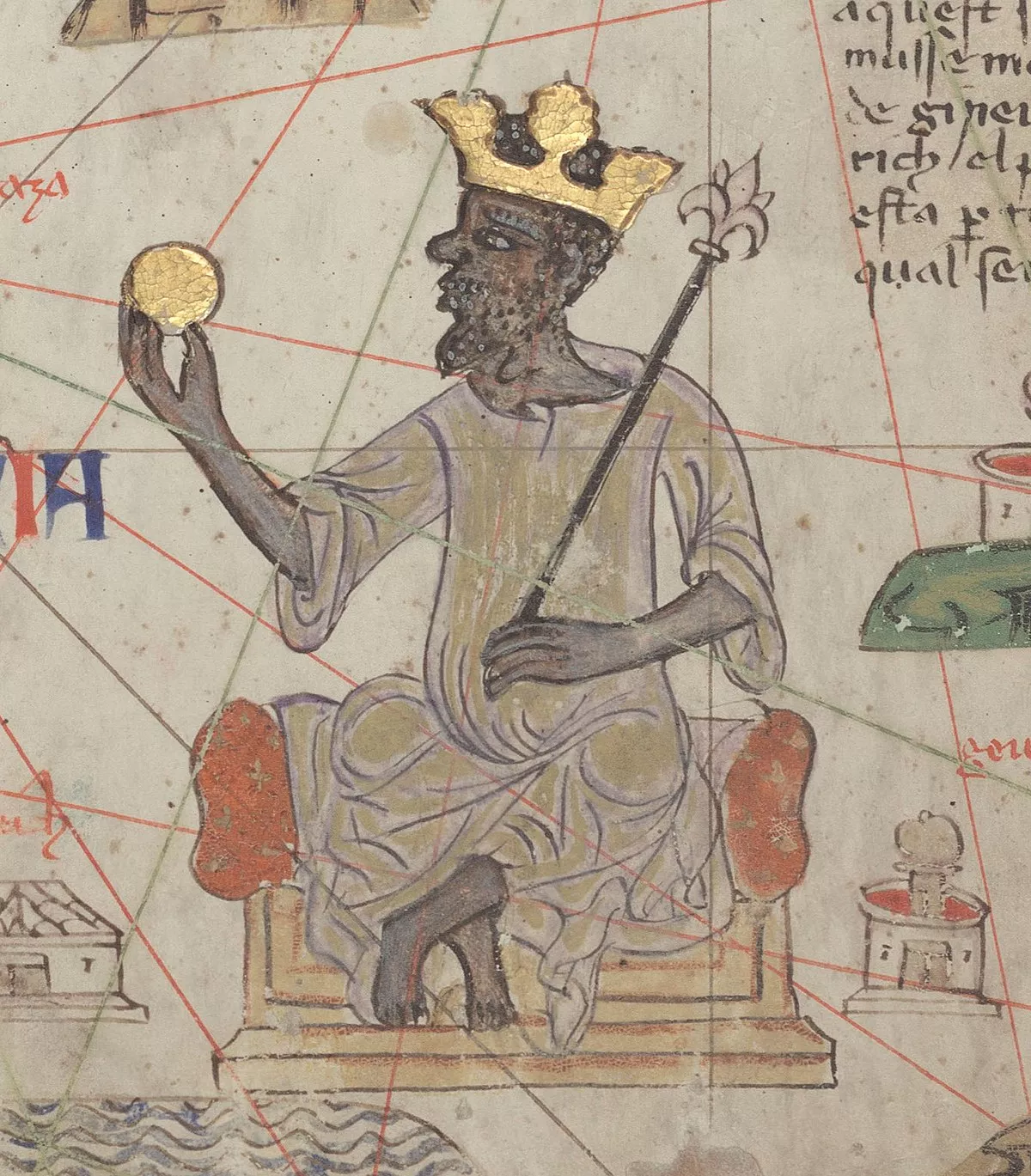 1.
1. Mansa Musa's reign is often regarded as the zenith of Mali's power and prestige, although he features less in Mandinka oral traditions than his predecessors.

 1.
1. Mansa Musa's reign is often regarded as the zenith of Mali's power and prestige, although he features less in Mandinka oral traditions than his predecessors.
Mansa Musa went on Hajj to Mecca in 1324, traveling with an enormous entourage and a vast supply of gold.
Mansa Musa expanded the borders of the Mali Empire, in particular incorporating the cities of Gao and Timbuktu into its territory.
Mansa Musa sought closer ties with the rest of the Muslim world, particularly the Mamluk and Marinid Sultanates.
Mansa Musa recruited scholars from the wider Muslim world to travel to Mali, such as the Andalusian poet Abu Ishaq al-Sahili, and helped establish Timbuktu as a center of Islamic learning.
Mansa Musa's reign is associated with numerous construction projects, including a portion of Djinguereber Mosque in Timbuktu.
In oral tradition and the Timbuktu Chronicles, Mansa Musa is further known as Kanku Mansa Musa.
In Mande tradition, it was common for one's name to be prefixed by his mother's name, so the name Kanku Mansa Musa means "Mansa Musa, son of Kanku", although it is unclear whether the genealogy implied is literal.
Mansa Musa is often given the title Hajji in oral tradition because he made hajj.
Much of what is known about Mansa Musa comes from Arabic sources written after his hajj, especially the writings of Al-Umari and Ibn Khaldun.
The date of Mansa Musa's birth is unknown, but he appears to have been a young man in 1324.
The Tarikh al-fattash claims that Mansa Musa accidentally killed Kanku at some point prior to his hajj.
Mansa Musa ascended to power in the early 1300s under unclear circumstances.
The Mansa led the second expedition himself and appointed Musa as his deputy to rule the empire until he returned.
When he did not return, Musa was crowned as mansa himself, marking a transfer of the line of succession from the descendants of Sunjata to the descendants of his brother Abu Bakr.
In 1324, while in Cairo, Mansa Musa said that he had conquered 24 cities and their surrounding districts.
Mansa Musa was a Muslim, and his hajj, or pilgrimage to Mecca, made him well known across North Africa and the Middle East.
Mansa Musa would have spent much time fostering the growth of the religion within his empire.
When Mansa Musa departed Mali for the Hajj, he left his son Muhammad to rule in his absence.
Mansa Musa made his pilgrimage between 1324 and 1325, spanning 2700 miles.
Mansa Musa provided all necessities for the procession, feeding the entire company of men and animals.
Mansa Musa gave the gold to the poor he met along his route.
Shihab al-Din al-'Umari, who visited Cairo shortly after Mansa Musa's pilgrimage to Mecca, noted that it was "a lavish display of power, wealth, and unprecedented by its size and pageantry".
Mansa Musa made a major point of showing off his nation's wealth.
When Mansa Musa did finally bow he said he was doing so for God alone.
Mansa Musa stayed in the Qarafa district of Cairo and befriended its governor, ibn Amir Hajib, who learned much about Mali from him.
Mansa Musa's generosity continued as he traveled onward to Mecca, and he gave gifts to fellow pilgrims and the people of Medina and Mecca.
Swords were drawn, but before the situation escalated further, Mansa Musa persuaded his men to back down.
However, Al-Nasir Muhammad returned Mansa Musa's earlier show of generosity with gifts of his own.
On his return journey, Mansa Musa met the Andalusi poet Abu Ishaq al-Sahili, whose eloquence and knowledge of jurisprudence impressed him, and whom he convinced to travel with him to Mali.
Mansa Musa embarked on a large building program, raising mosques and madrasas in Timbuktu and Gao.
Mansa Musa brought architects from Andalusia, a region in Spain, and Cairo to build his grand palace in Timbuktu and the great Djinguereber Mosque that still stands.
Alternatively, it is possible that the four-year reign Ibn Khaldun credits Maghan with actually referred to his ruling Mali while Mansa Musa was away on the hajj, and he only reigned briefly in his own right.
Mansa Musa is less renowned in Mande oral tradition as performed by the jeliw.
Mansa Musa is criticized for being unfaithful to tradition, and some of the jeliw regard Musa as having wasted Mali's wealth.
However, some aspects of Mansa Musa appear to have been incorporated into a figure in Mande oral tradition known as Fajigi, which translates as "father of hope".
The name "Mansa Musa" has become virtually synonymous with pilgrimage in Mande tradition, such that other figures who are remembered as going on a pilgrimage, such as Fakoli, are called Mansa Musa.
Mansa Musa may have taken as much as 18 tons of gold on his hajj, equal in value to over US$1.397 billion in 2024.
The gold Mansa Musa brought on his pilgrimage probably represented years of accumulated tribute that Mansa Musa would have spent much of his early reign gathering.